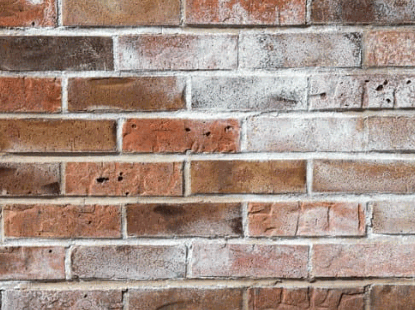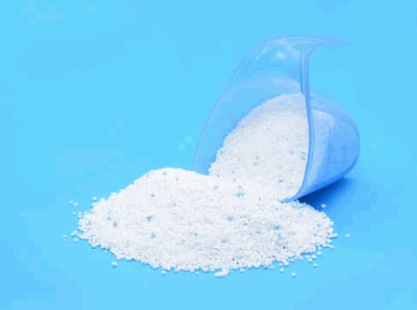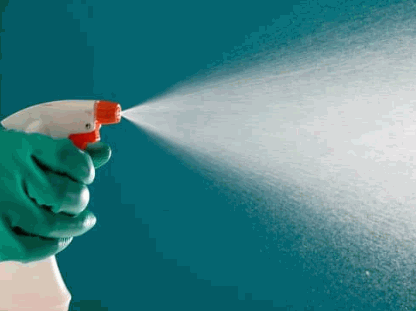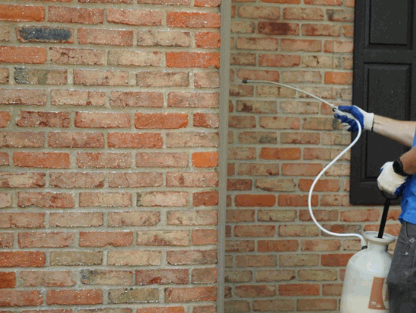First things first - brick efflorescence is NOT going to cause damage to your brick walls. Building materials can handle efflorescence. It isn't harmful.
Now that's out of the way, though, there's no denying that efflorescence is an eye sore. It can make your brick wall look ugly, and removing efflorescence can be a real pain, too, so we understand why so many people are frustrated by efflorescence on their brick walls.
Below, we've put together a helpful guide that will explain what efflorescence is, help you to remove efflorescence from brick easily, and then provide some tips to help you prevent efflorescence in the future.
Sound good?
Then join us below!
Efflorescence is a result of water-soluble salts building up on your brick surface over time. They're especially common on exterior walls because of their porous surface.
Common salt deposits like:
will land on your brick walls when it's raining, and when the water evaporates, a white powdery substance is left behind. THIS is efflorescence.
To remove efflorescence, you have to focus on the whole brick - the mortar joints, the porous material of the brick itself, and everything in between.
Efflorescence stains are common stains on exterior walls and, although they won't cause serious problems, they will affect the way your house looks. And kerb appeal is important.
If you follow our guide today, though, you'll be able to clean efflorescence away from red brick with ease.

Efflorescence affects your brick wall for two simple reasons:
Preventing efflorescence is tricky (but it can be done - more on that later) because brickwork is simply susceptible to it. As the water content in rain evaporates, it leaves behind salt stains of efflorescence on the surface of your walls.
Over time, this will build up, and small patches will eventually turn into large areas of efflorescence. That means taking care of it is important if you want your house to stay looking its best.
And thankfully, we here at The Sparkle Gang have the perfect solution for you...

There are a number of ways to remove efflorescence from brick walls, and although we'll include them all below in our two-step process, we certainly recommend vinegar as the cleaning solution. But if you have other alternatives, these will work too.
So, whether it's old bricks or not, if you need an effective efflorescence remover, here's everything you need to do:
Check out: Home Remedies For Slippery Floors
To get started, you'll need to select a cleaning method from the options below and gather everything you need accordingly.
Before starting any cleaning, though, you'll need to make sure you put on your rubber gloves and face mask to stop the powdery substance from getting in your face and breathing it in.
When you're ready to get started, here's what you'll need to do depending on the method you choose:
Before removing efflorescence, you'll need to use a stiff brush to loosen the powder. A stiff bristled brush is best for this because it will get in the grout and loosen the efflorescence from the bricks at the same time.
Scrub the wall in vertical and horizontal movements to really loosen the efflorescence from the surface of the brickwork. Do a dry brush at this point because excess water may be unnecessary and cleaning efflorescence off a dry surface is always a better idea (if possible) because water causes efflorescence on the surface of brickwork to begin with, so keeping water sources away from it is a good idea if you can.
This step is necessary for EVERY SOLUTION below. And, if the efflorescence problem isn't too severe, the brush alone may be good enough to get rid of it entirely.

If the brush alone isn't enough, then a detergent and warm water mix might be.
After you have scrubbed the efflorescence with your brush, spray the wall with a garden hose set to a low setting to prevent permanent damage to the brickwork (too much power could cause serious problems for you, so always treat your bricks with respect when you rinse it with water from a hose).
Wet every area with efflorescence and then pour some mild dish detergent onto your brush and in circular motions scrub the brick walls.
Once the detergent has been worked into the brick surface, take plain water and rinse the wall again to get rid of the detergent.
Leave to air dry and then check to see if the efflorescence has gone from the surface. If it has, you can move on to the final step of our two-step process, but if not, another method below might be necessary with a stronger cleaning method.

Here, a shop-bought product might work for you. Simply buy a brick cleaner that's designed to take care of efflorescence from the surface of your walls.
Although each cleaner will have different instructions (and you should ABSOLUTELY read them to make sure you're being safe and using the solution according to its instructions), most will simply require you to use a brush on the surface first, followed by a rinse with fresh water, and then applying the cleaner using a spray or mixed in a bucket with a certain amount of water.
Once applied, you'll typically need to rinse the wall again and then leave it to dry to see if the salt substance has left the bricks.
Brick efflorescence remover shouldn't be too expensive, and since they're specifically designed to get rid of efflorescence, they ought to do the job.
Another great solution is muriatic acid. This is great at breaking down the salt in efflorescence that's common in all types of building materials, from bricks, mortar, cement, and clay to grout admixtures and backing materials.
Muriatic acid is strong stuff, though, so you have to be especially careful here. You'll need gloves, protective clothing, safety goggles, and a respirator to ensure you are safe.
To get started, simply spray your wall with water to rinse the bricks at first. After that, mix together 1 part muriatic acid with 12 parts water (it's important that you stick to this mixture, too much acid can be bad for your brick wall).
Remember: When mixing water and acid, you should add the acid to the water, not the other way around, or else you could risk splashing it on yourself or in the area you're working.
Once mixed, simply apply the mixture to the brick wall using a stiff brush again. Leave it for 5 minutes to break down the salt, and then rinse with clean water.
This ought to do the trick since muriatic acid is so strong.
Now for our preferred method, though.
Not everyone will like the idea of mixing strong acid and water to clean their bricks, and we don't blame you for that. Besides, here at The Sparkle Gang, we look for solutions that everyone can use quickly.
So, using the idea that acid is so helpful when fighting efflorescence, we thought we'd suggest a solution that works brilliantly, but with an acid, everyone has at home, anyway. That's right. Vinegar.
Mix together equal parts water and white vinegar in a spray bottle and spray the wall. Leave for 5 minutes to let the acid from the vinegar work on the salty efflorescence.
Once done, spray again with the solution and scrub with a brush, before rinsing the whole surface clean with fresh water to wash away the acid.
CAUTION: Do not use on bricks 20 years old or older. Older bricks react poorly to vinegar, so this one is for the newer builds only.
Check out: How To Clean Soot Off Bricks

Once your chosen method has worked, you can use a brick sealer. This works as a water-resistant sealer to protect the porous material from rain, etc., which in theory will help prevent efflorescence from forming to begin with.
There are many brick sealers out there, so shop around for the best one for you.

In our opinion, the most effective solution talked about today is the one using vinegar. The acid guarantees success, without being so powerful as in the case of the muriatic example.
It's a more gentle approach, but one that's still very effective.
With older bricks, the acid can cause damage. That's why we only recommend this method for bricks that are newer than 20 years.
With that said, if you accidentally use vinegar on an older brick, you can neutralise it using a mixture of 3 tablespoons of baking soda mixed into water. This will neutralise the acidity and prevent any further discolouration on your walls.
Check out: Apple Cider Vinegar Cleaning Hacks

Doing it yourself is great, but perhaps you don't have the time to do so. In that case, you could call in the professionals who have a couple of other methods they could use to blast that efflorescence away.
The first option is a pressure washer. Using a pressure washer is great because it quite literally blasts the salty deposits off the wall, leaving only bright red bricks behind once more. The problem with pressure washers, though, is that if you aren't careful, you can damage your walls. That's why this method is best left to the pros.
Another method open to professionals is sandblasting. For this, a blasting bucket, blasting gun, and fine sandblasting media will be necessary. They'll use the fine sand to gently, but effectively, blast away the efflorescence. Again, this requires a steady hand and a patient approach - so this is another one best left to the pros.
Taking care of it yourself is a great option, but it might not work for everyone. If you need the professionals to help, why not contact The Sparkle Gang today, to see how we can assist?
Hopefully, you have found today's article helpful. With so many options for removing efflorescence, you should be able to find a method that suits you in our article.
And if not, well, you can always contact us here at The Sparkle Gang to take care of it for you. We're always happy to help!